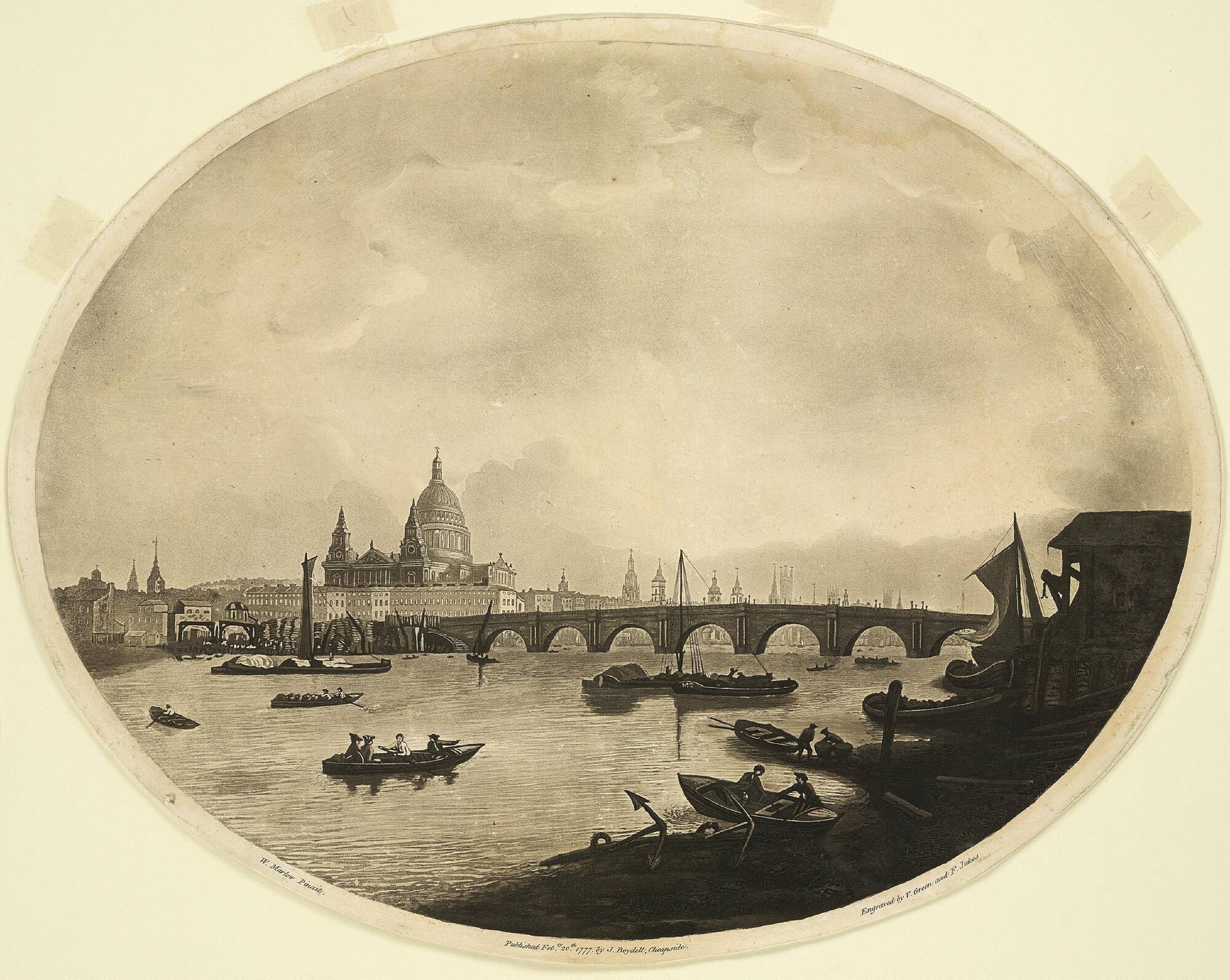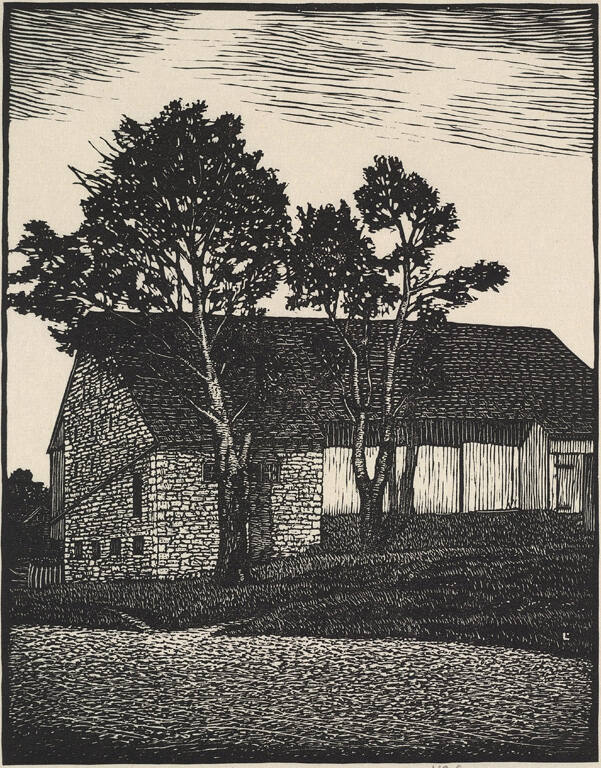Francis Jukes, Valentine Green
(British, born 1745 or 1747, died 1812)
View of London Bridge and St. Pauls

Object Details
Artist
Francis Jukes, Valentine Green
Date
1777
Medium
Engraving and aquatint
Credit Line
Bequest of William P. Chapman, Jr., Class of 1895
Object
Number
62.3337
The vast majority of vedutisti of the eighteenth century made use of engraving, line etching, or dry(…)
The vast majority of vedutisti of the eighteenth century made use of engraving, line etching, or drypoint techniques, which all result in lines relatively comparable to those made by drawing. In collaboration with the painter and printmaker Paul Sandby, Francis Jukes made a departure from this linear tradition by refining the process of aquatint and applying it to city views. The aquatint technique came to England in the mid-eighteenth century after its invention in the Netherlands; the process relies on the application of a grainy resin to the copperplate such that, when etched, the plate can convey light and shade in a more painterly way, without the graphic interference of manual hatching. Here, working with the successful engraver Valentine Green, Jukes uses aquatint to capture the atmospheric perspective of his view across the Thames to St. Paul’s and beyond; this effect is achieved by etching the aquatint ground successively less deeply from foreground to background.
(Andrew C. Weislogel, “Mirror of the City: The Printed View in Italy and Beyond, 1450–1940,” catalogue accompanying an exhibition organized by the Herbert F. Johnson Museum of Art, curated by Andrew C. Weislogel and Stuart M. Blumin, and presented at the Johnson Museum August 11–December 23, 2012)












